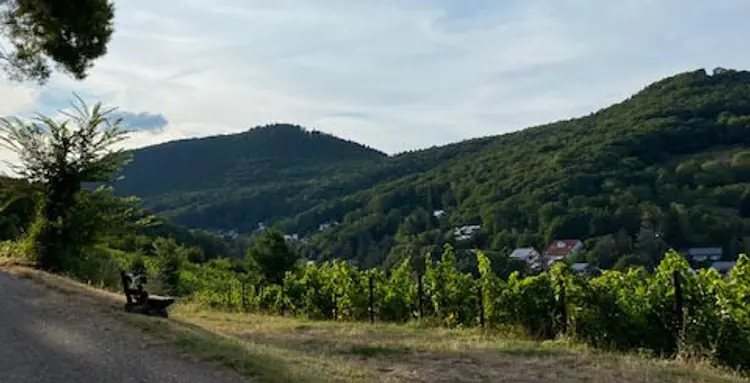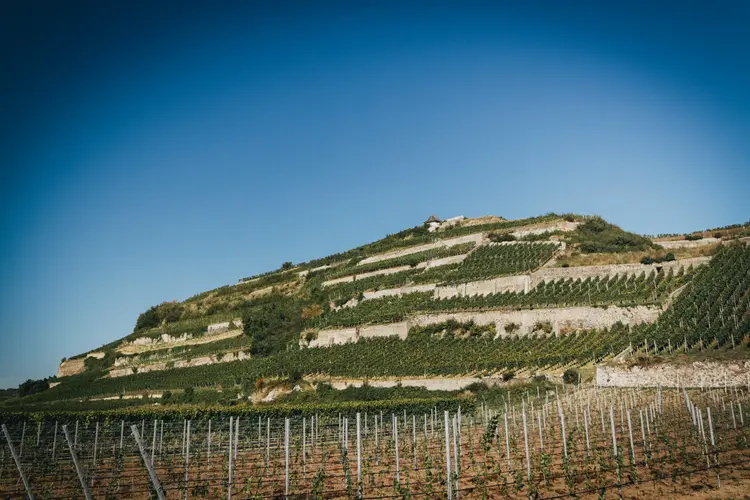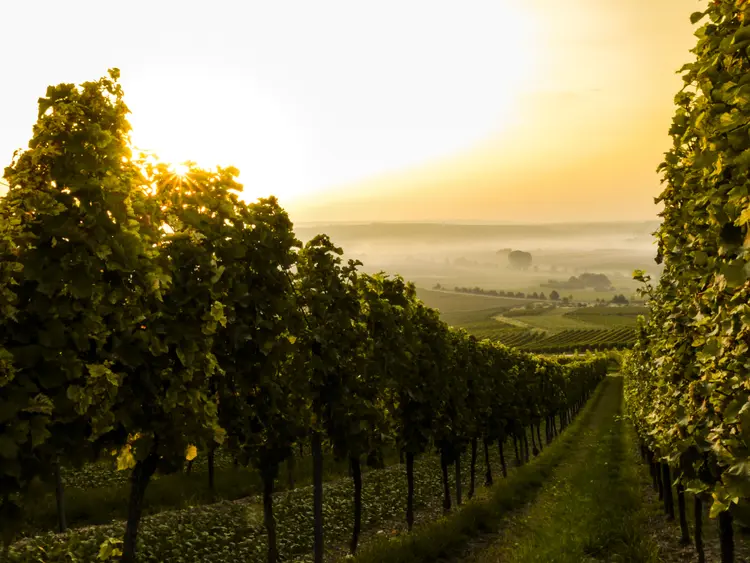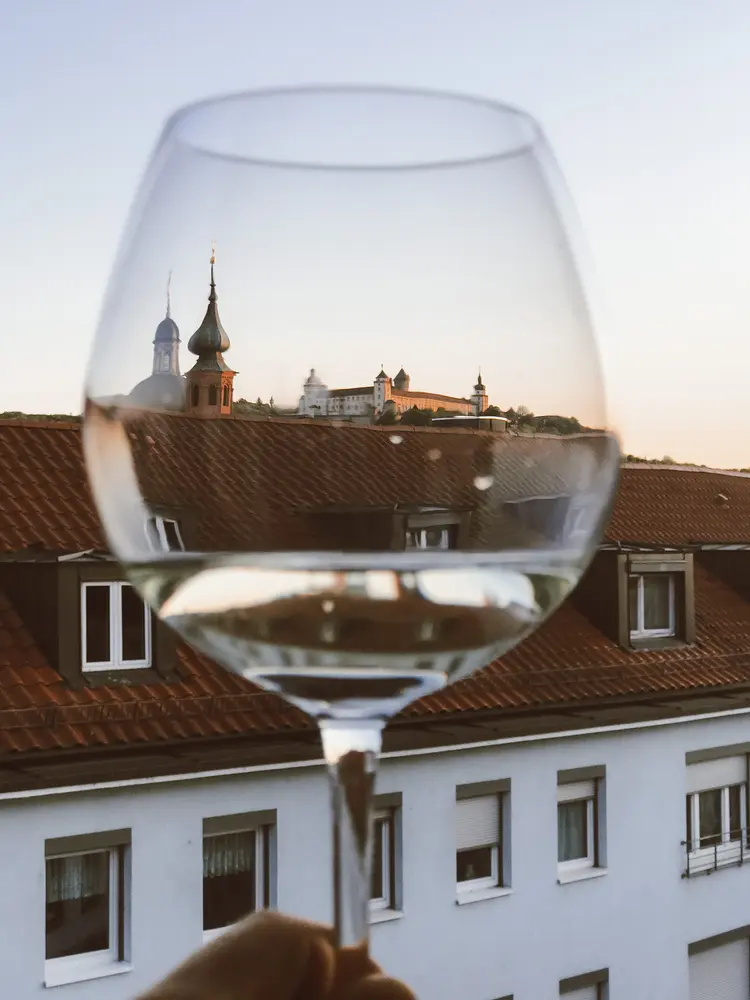Riesling
Mosel
Dresden
An interview with Bénédict Berna, owner of Rhinoçéro wine bar
A beginners' guide to German wine by an expert

It feels a little cheeky to ask a Frenchman for advice on German wine, but given that Bénédict Berna, owner of Berlin’s Rhinoçéro wine bar, was born into vineyards and then spent the last 10 years of his career in Germany, he is - in fact - the perfect person to give us a rundown of all things Deutsche Weintrauben.
(Martina, his partner in crime, joined us halfway through our conversation, and contributed many words of wine wisdom, too!)
“I’ve always believed that we should indulge in local produce,” Bénédict tells me, “which - of course - extends to enjoying wine from the country we’re in. When I first went to the Palatinate region (one of Germany’s more well-known wine-producing areas), I was overwhelmed with how beautiful it was. Plus the Mediterranean micro-climate (where palm and almond trees are dotted between castles) and strong food culture made the stay even more memorable.”
For novices like me, I asked for a quick run-down of German grapes that one should look out for, and what they should know about the different varieties.
“Riesling is the king. This is because it’s very resilient and is harvested late in the year, meaning it can soak up the early-autumn sun. But while the backbone of Riesling is the same - elegant and light - there are thousands of different expressions. The only way to find your Riesling is to try them.” Tough challenge, huh
“In terms of reds, Spätburgunder, or Pinot Noir in French, is Germany’s champion. It can be drunk young when it is juicy and fresh, but it also ages beautifully and develops a great depth of taste.”
While a lot of our content is for member’s only, this newsletter is for free! Every month we share our favourite adventures and corners of Germany, and give you tips on what you can do to go beyond the usual tourist spots. Sign up so you don’t miss out.



“Looking at wine regions, the Mosel is the most beautiful and exports about 80% of its wine. It’s well worth visiting, as the wine they keep in the area is the best, and very exclusive! I’d say it’s a little like the Burgundy of Germany, where vineyards each produce slightly different, great flavours! Palatine is also a great region for wine thanks to its mixed terroir: you’ll find the bigger producers working on the flat soil, but the best grapes are hand-picked from the steep slopes that are exposed to the sun, where the soil shows much more complexity, and therefore better wines are produced!”
“Away from the ‘big hitters’, it’s worth visiting:
“Now is a great time to get into German wine: there’s a lot of exciting stuff going on across the country, and a lot of it under the radar. For example, Martina and I were driving to France and stopped at what we thought was a random hotel. It turned out to be a wine grower’s place, and he let us wander through his vineyards before bringing up some wine from his cellar, which was delicious!”


“In the last 10 years, it’s been fascinating to watch Germany’s wine production shift, as many children of vineyards are taking over and gently transforming production into a process that is more in harmony with nature. This means there are a lot of natural and biodynamic wines, with no pesticides and limited sulfates and chemicals.”
“Of course, the climate is also affecting grape growth in Germany. For instance, blends taste different every year, and with warmer summers, the Cabernet Sauvignon that’s been experimented with in the Mosel in the last years is showing a lot of promise (whereas it was just too cold to grow well 20 years ago).”
“What I want to say is, that Germany has an exceptionally varied and delicious wine selection, and you simply have to start exploring. Your go-to wine is such a personal thing. But if you’re in doubt,” Bénédict grins, “go into your local wine store and ask for a bottle for around €10, you really can’t go wrong!”

Bénédict’s favourite German white wine:
The Alfer Hölle Riesling from Weingut Stein (in the Mosel); owners Ulli & Peter are making stunning whites (and reds!).
Martina’s favourite German white wine:
I love the “Frei.Körper.Kultur Weiß” from Weingut Schmitt (Rhenish Hesse).
Like a lot of exciting German wines, it’s a blend of different grape varieties: Scheurebe (a crossing of Silvaner and Riesling), Huxelrebe, Grauburgunder (Pinot Gris), Ortega (a cross between Müller-Thurgau and Siegerreberape) and Weißburgunder (Pinot Blanc).
Bénédict’s favourite German red wine:
At the moment, it’s the R Pure 2018 (Cabernet Sauvignon) from Weingut Seckinger (Palatinate).
Easy-from Berlin vineyard trip:
Just a few hours away from Berlin, near Dresden, is Frédéric Fourré’s Weinbau, located directly on the Elbe. It’s a beautiful place where he produces a variety of different whites: he cultivates one hectare, so only makes around 8,500 bottles each year, and it’s so good it never really makes it outside the region (if you’re lucky, you can find it stocked in Berlin on occasion) - so you must go and visit!
While there, visit the cute little village of Meißen, also known for its famous porcelain. From there it’s easy to hike through beautiful vineyards and surrounding countryside. (The below photos are from Bénédict and Martina’s 2013 trip.)
Further afield:
The Vineyard B&B: owners Diana und Christian are so lovely, and the B&B is super cosy, it’s such a great base from which to explore their vineyard, as well as the surrounding wine-growing regions Nahe and Pfalz.
The perfect two-week plan:
We’d start in the Mosel and just head south! Driving from vineyard to vineyard, from the Mosel Valley to the Rhein Valley, then down through the Palatine before ending at Bodensee!
Discover handpicked, properties in Germany that you'd struggle to find online. Sign up, browse the spaces, read the stories, and contact the owners directly to book your perfect trip!
Cut through the noise. Each property is individually assessed by our travel-expert founder, who 12+ years in the industry. We only feature the best, unique stays in Germany.
Tailored tips to match your needs. Let us know your dates, your needs, and you budget, and our founder further curates our curation to find places to stay that are perfect for you.
Give back. None of our properties have paid to be featured, and you book directly with owners, which means they are 30% better off than if you book via big platforms - plus no hidden fees for you.
Stay in the know. Receive monthly property finds, last-minute availability tips and adventure ideas, as well as ideas of where to book ahead, so you can explore more often.
* no minimum sign up required, cancel at any time.

Handpicked places to stay

Best price guaranteed

No hidden fees or charges

New finds every month

Member perks & discounts

Focus on sustainability
© 2024. All rights reserved.